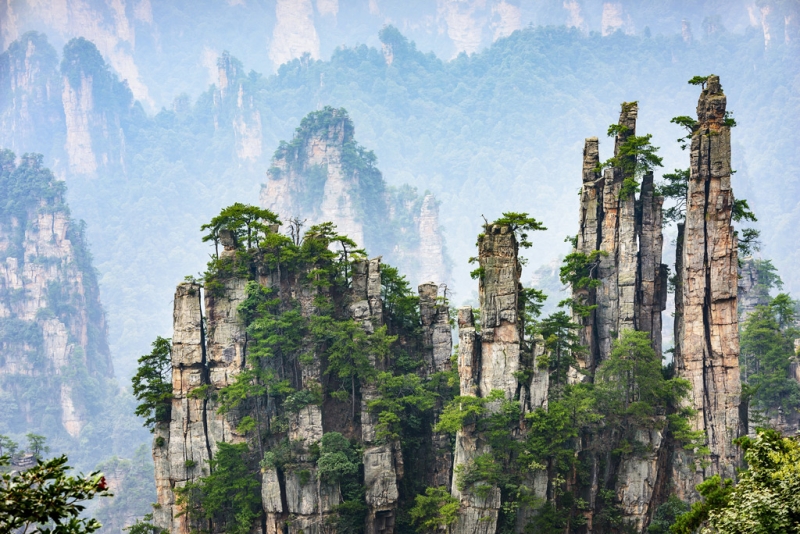
Hunan Province is one of the most popular tourist destinations in China, both among the Chinese themselves and among foreigners. For Chinese citizens, Hunan is, first and foremost, the birthplace of the great Chairman Mao. And residents of other countries are attracted by the opportunity to see the ancient cities of the small peoples of China and the natural beauty of Hunan. The most important attraction of this province is the cliffs in Zhangjiajie Park, which served as a prototype for the landscapes of the planet Pandora from the movie Avatar.
The views in the park are truly fantastic: hundreds of thin peaks surrounded by dense vegetation rise more than 1000 meters into the sky. In cloudy weather, when the rocks are partially covered by clouds, they really seem to float in the air.
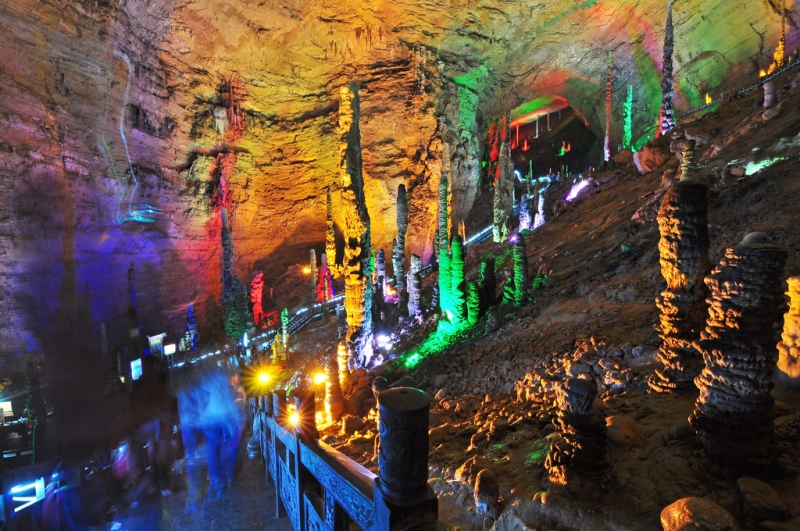
Zhangjiajie National Park is part of the Wulingyuan Conservation Area, which covers a huge area of almost 400 square kilometers. In addition to the Avatar Park itself, Wulingyuan has about 40 caves, several waterfalls and many lakes and rivers suitable for rafting. The park is equipped not only with numerous hiking trails, but also with cable cars, the world’s tallest open-air elevator, and even its own railway with free tourist buses.
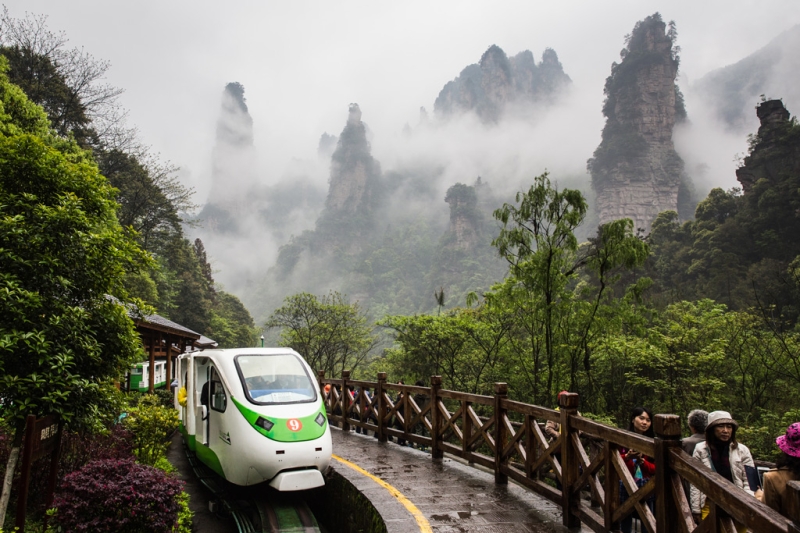
Not far from Zhangjiajie Park, on the territory of another nature reserve, Tianmen Shan, is the sacred Chinese mountain Tianmen. It is famous, first of all, for the world’s highest cave, “Heaven’s Gate,” which was formed as a result of the collapse of part of the rock. There are two ways to climb Tianmen Mountain – by cable car or along the winding, narrow “Heavenly Highway”, or “Road of 99 Turns”. At the top of the mountain you can walk along the paths along the steep cliffs. If you are not one of the faint of heart, we highly recommend taking a walk along the “Glass Sky Path”. It is a 60-meter section of the trail made of tempered glass, and walking along it over the abyss is an unforgettable, albeit frightening, experience. To go down from the top of the mountain to the foot of the Heaven’s Gate cave you will need to take a long staircase with 999 steps, so count on your strength.
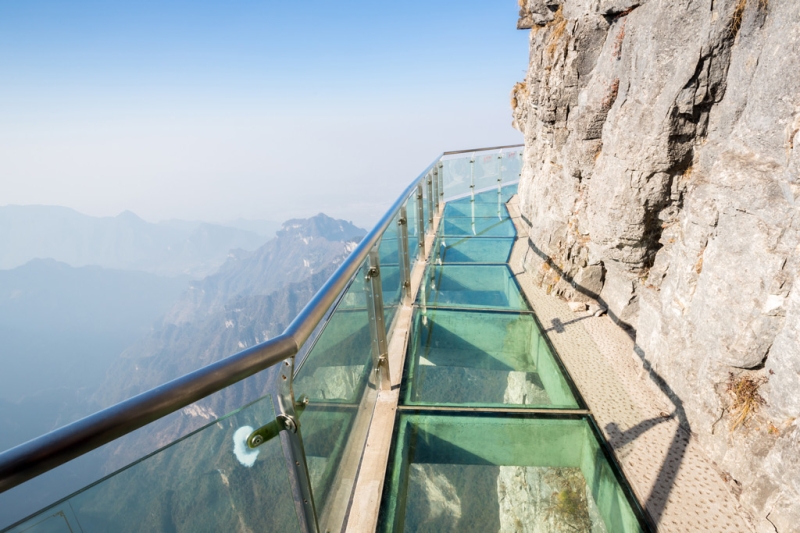
To explore both parks, you will need to stay in the Zhangjiajie city area for at least one night. You have a choice of three different options – guesthouses inside Zhangjiajie Park (great views, but spartan living conditions),
hotels in the village of Zhangjiajie (good views and conditions, but the prices are inflated) or in the city of Zhangjiajie itself (a large selection of hotels at different prices, but the city is no different in beauty). No, we were not mistaken; there really is some confusion here, typical of Chinese geographical names. Zhangjiajie is the park itself, the village next to the park, the city, and finally the administrative district. Keep this in mind when choosing a hotel.
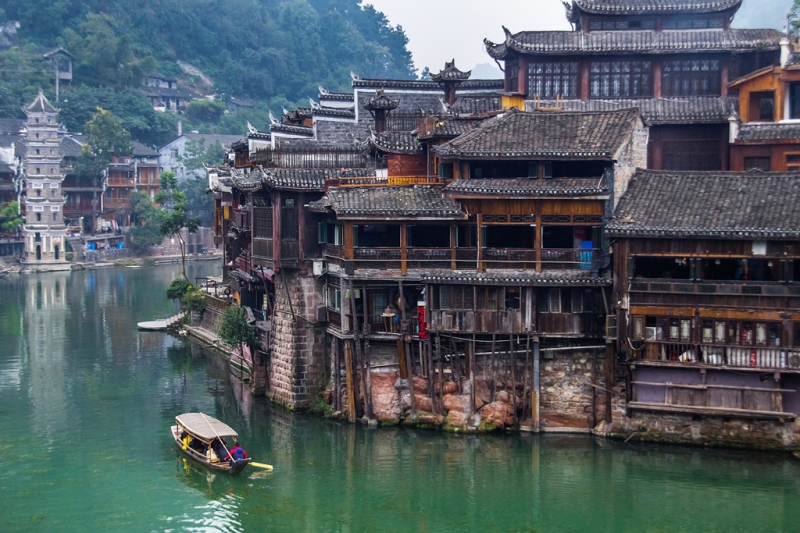
Hunan Province is also known for the fact that several indigenous peoples of China live here. Just to the west of Zhangjiajie is the autonomous region of the Miao people and its famous tourist capital, the city of Fenghuang. The city was founded at the beginning of the 18th century and has changed little since then, so it rightfully bears the title of one of the most ancient cities in China. Fenghuang (meaning “Phoenix City”) is built on the banks of the Tuojiang River, and houses on high stilts stand at the water’s edge, leading it to be called the “Venice of China.” If you are an experienced independent traveler, there is no need to book a city tour; it is better to just wander the narrow streets and enjoy a boat ride with one of the local fishermen.
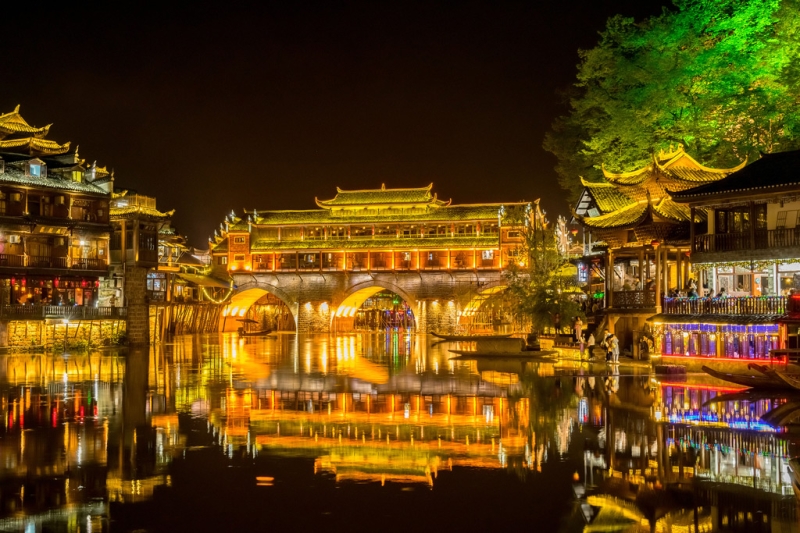
Unfortunately, the town is very quickly turning into an attraction for Chinese tourists, and during the “restoration”, ancient architectural monuments are replaced with modern fakes. So hurry up to visit this amazing place while its temples, towers, walls and pavements still preserve the spirit of ancient China. You can get to Fenghuang from Zhangjiajie by bus – the trip will take about four hours, or you can fly to the nearest Tongren Airport from the capital of Hunan, Changsha.
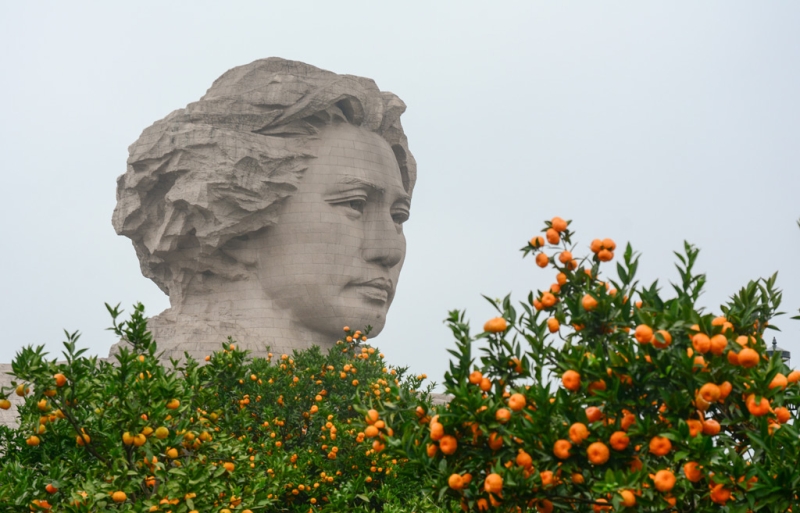
The city of Changsha itself is notable for two things – the beautiful statue of Young Comrade Mao in the Orange Garden Memorial Park and its vibrant nightlife. But the most valuable thing here is, of course, the restaurants of the world-famous fiery and spicy Hunan cuisine. Residents from all over China come to Hunan to try the great helmsman’s favorite dishes, for example, “Chairman Mao’s red pork.”
The best months to visit Hunan are June, September and October. If you are not afraid of heat and humidity, then July and August are also quite suitable. In winter, the park is not very comfortable, and when there is a lot of snow, it is closed to tourists for safety reasons. You shouldn’t come here during the May holidays either; China is on holiday these days, so monster crowds are guaranteed.

You may be interested in:
How to get to the Shaolin Monastery
8 places in Hong Kong that every tourist needs to visit

